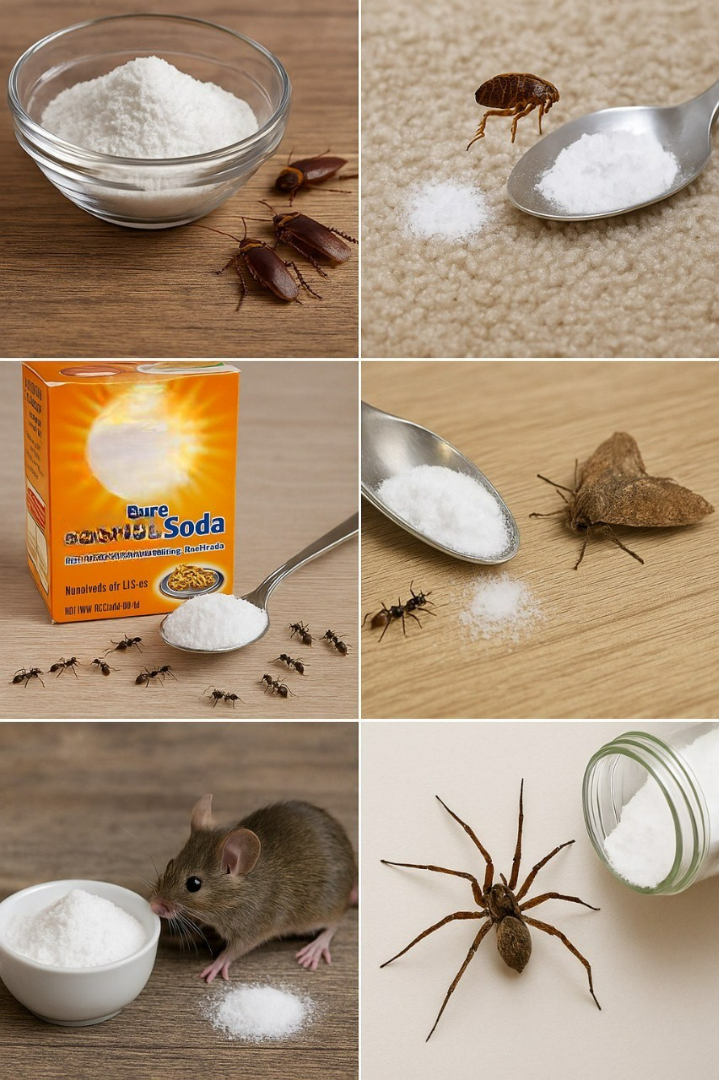In the constant battle against household pests, many homeowners are seeking effective alternatives to harsh chemical pesticides. Baking soda (sodium bicarbonate) has emerged as a popular, affordable, and environmentally friendly option for pest control. This common kitchen staple can be used in various ways to combat different types of pests, from ants and roaches to fleas and rodents. This article explores how baking soda works against pests and provides practical applications for natural pest management.
How Baking Soda Works Against Pests
Baking soda can be effective against certain pests for several reasons:
- Internal Reaction: When consumed by insects, baking soda reacts with the acidic substances in their digestive systems, producing carbon dioxide gas. Since many insects cannot expel this gas effectively, it builds up inside their bodies, eventually killing them.
- Dehydration: Baking soda can have a drying effect on the exoskeletons of some insects, contributing to their dehydration.
- Abrasive Properties: The fine granular texture of baking soda can be abrasive to the bodies of small insects, potentially damaging their exoskeletons.
- Fungicidal Properties: Baking soda is registered with the Environmental Protection Agency (EPA) as a fungicide, making it effective against certain plant fungi that may attract pests.
Baking Soda Solutions for Common Household Pests
For Cockroaches
Cockroaches are notoriously difficult to eliminate and can spread diseases and trigger allergies. Here’s how to use baking soda against them:
Baking Soda and Sugar Mixture:
- Mix equal parts baking soda and sugar in a small bowl
- Place the mixture in areas where you’ve spotted roach activity (behind appliances, under sinks, in dark corners)
- The sugar attracts the roaches while the baking soda acts as the killing agent
- Replenish the mixture every few days until roach activity ceases
Baking Soda and Water Trap:
- Fill a small container with water
- Place another container with the baking soda and sugar mixture nearby
- When roaches consume the mixture, they’ll seek water, which accelerates the internal reaction
For Ants
Ants can quickly become a major nuisance when they establish trails into your home. Here’s how to use baking soda to combat them:
Powdered Sugar and Baking Soda Mixture:
- Combine equal parts baking soda and powdered sugar (the fine texture matches better than granulated sugar)
- Sprinkle the mixture along ant trails and near entry points
- The worker ants will carry the mixture back to the colony, affecting the entire ant population
- For best results, place the mixture in small container lids to keep it contained
For Ant Mounds Outdoors:
- Dampen the ant mound with water
- Sprinkle approximately 2 cups of baking soda over the mound
- After 30 minutes, pour 1 cup of vinegar onto the mound
- The chemical reaction helps eliminate the colony
For Fleas
Fleas can infest carpets, furniture, and pets, causing discomfort and potentially spreading diseases. Baking soda can help in managing these tiny pests:
Carpet Treatment:
- Sprinkle a generous amount of baking soda evenly across carpeted areas
- For enhanced effectiveness, add equal parts of table salt to the baking soda
- Use a broom or brush to work the mixture deep into carpet fibers
- Let it sit overnight to dehydrate fleas and their eggs
- Vacuum thoroughly the next day and immediately dispose of the vacuum bag outside
Pet Treatment:
- Mix 1 teaspoon of baking soda with 1.5 cups of warm water
- Apply the diluted solution to your pet’s wet fur during bathtime (avoid the face)
- Let it sit for a minute, then rinse thoroughly
- Always consult with your veterinarian before trying new treatments on pets
For Rodents
CONTINUE READING ON THE NEXT PAGE 🥰💕

